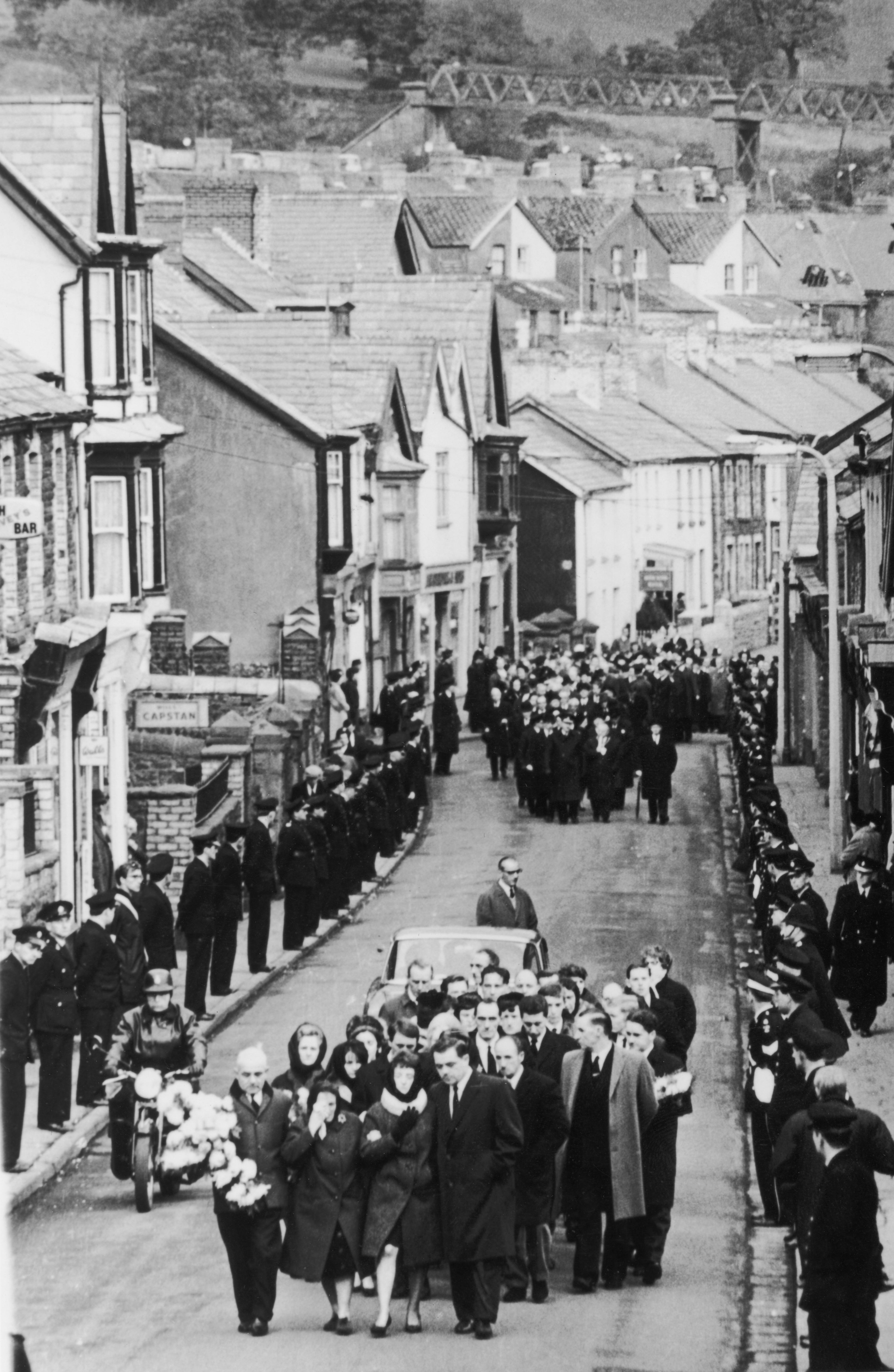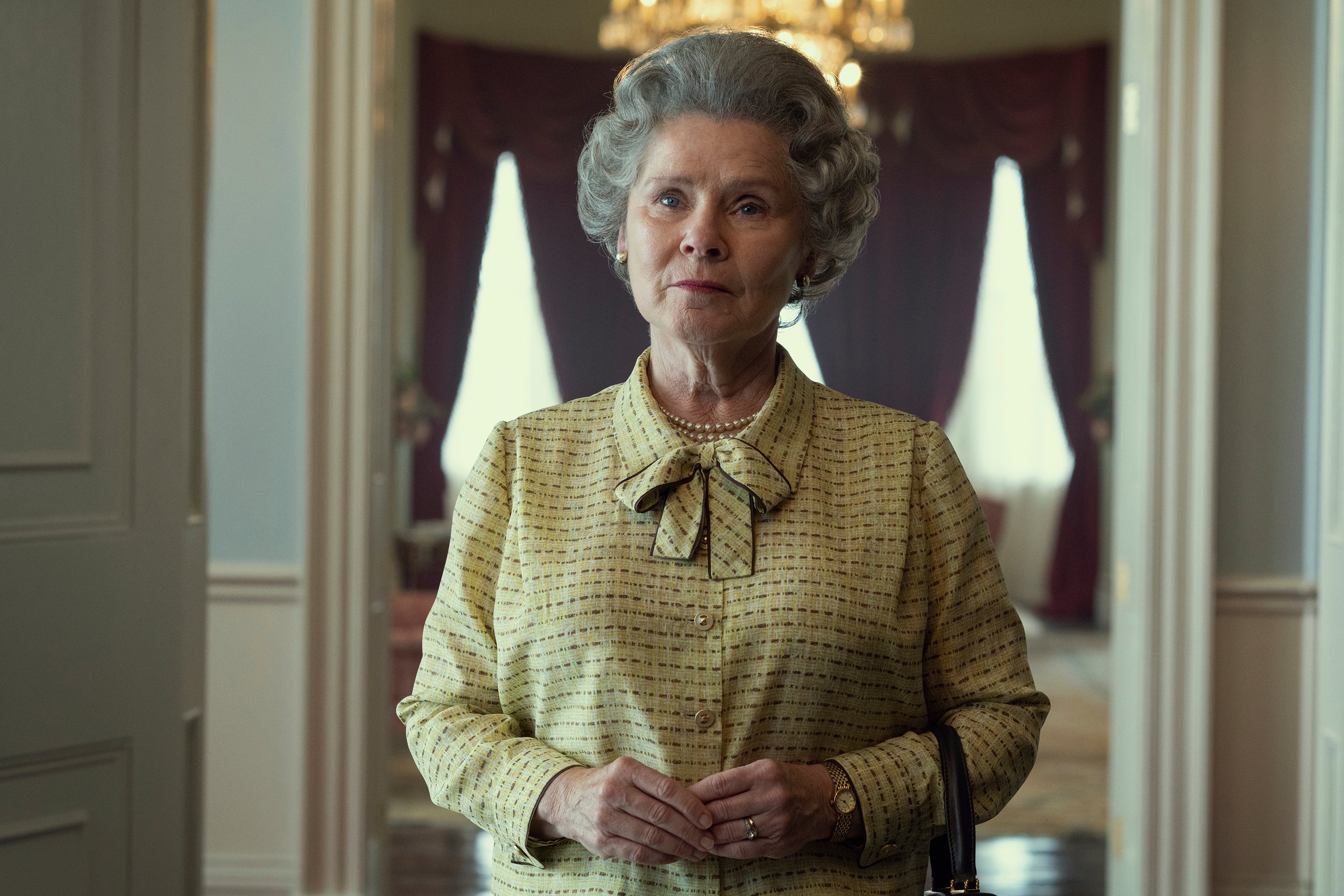How The Crown portrayed the Aberfan disaster in Wales
The collapse of a colliery spoil tip 55 years ago resulted in the deaths of 144 people
Your support helps us to tell the story
From reproductive rights to climate change to Big Tech, The Independent is on the ground when the story is developing. Whether it's investigating the financials of Elon Musk's pro-Trump PAC or producing our latest documentary, 'The A Word', which shines a light on the American women fighting for reproductive rights, we know how important it is to parse out the facts from the messaging.
At such a critical moment in US history, we need reporters on the ground. Your donation allows us to keep sending journalists to speak to both sides of the story.
The Independent is trusted by Americans across the entire political spectrum. And unlike many other quality news outlets, we choose not to lock Americans out of our reporting and analysis with paywalls. We believe quality journalism should be available to everyone, paid for by those who can afford it.
Your support makes all the difference.At around quarter past nine on the morning of Friday 21 October 1966, disaster struck the coal mining village of Aberfan in South Wales.
What began as a typical morning 56 years ago escalated quickly into tragedy when a colliery spoil tip located directly above the village slid downhill.
The devastating event – which became known as the Aberfan disaster – resulted in 144 people losing their lives, 116 of whom were children.
Queen Elizabeth II and Prince Philip travelled to Aberfan to pay their respects to the deceased and their loved ones on 29 October 1966, a day after the final victim was recovered from the debris.
In 2019, the tragedy was portrayed in the third season of Netflix’s The Crown.
How did the Aberfan disaster occur?
The colliery tip – a pile of mining waste material – that caused the Aberfan disaster had been created eight years prior on a point of high ground that overlooked the village.
Despite the official regulations of the National Coal Board (NCB), the tip was placed on an area of ground that was partly above underground water springs.
By the day of the incident, the tip had reached approximately 111 feet in height, containing just under 300,000 cubic yards of spoil.
Concerns had previously been voiced about the danger of the spoil tip being located directly above the village’s local junior school, such as in a letter written in 1963 to the NCB regarding the “danger from coal slurry being tipped at the rear of the Pantglas Schools”.
However, measures were not put into place by the NCB to prevent the calamitous event from occurring.

As such, plenty of anger felt by the grieving village was directed towards the NCB as members of the community struggled to come to terms with the Aberfan disaster.
In the weeks leading up to the preventable tragedy, the village experienced a significant amount of rainfall. This led to rainwater building up within the colliery tip, causing it to collapse and cause a slurry.
Travelling at a high speed, the landslide rushed down the mountain slope, destroying two farm cottages on the land before reaching Pantglas Junior School.
The academic institution was struck by an avalanche of thick mud and sludge just as the day’s lessons had commenced.
Had the landslide occurred just half an hour earlier, before the children had arrived at school, or three hours later, when they would have broken up for half-term, many of the children may not have lost their lives.

Five teachers and 109 children lost their lives in the school, which was engulfed by the contents of the colliery tip. The total number of fatalities reached 144.
In their final moments, several members of staff at Pantglas Junior School did all they could to protect the pupils in their care.
Nansi Williams, a dinner lady at the school who perished in the disaster, used her body to shield five children, all of whom survived thanks to her selfless act.
Jeff Edwards, the last child to be rescued alive from the remains of the school, recalled hearing the “crying and screaming” of his classmates in the landslide’s aftermath.
“As time went on they got quieter and quieter as children died, they were buried and running out of air,” he said.
What happened after the Aberfan disaster?
Following the aftermath of the Aberfan disaster, local residents of the village, miners and emergency responders carried out a rescue effort to try to retrieve as many people from the rubble as possible, with the assistance of thousands of volunteers.
While the rescue effort continued for a week, the last survivor was discovered at 11am on the day of the landslide.
Welsh broadcaster John Humphrys, who was present on the scene, vividly remembered the despairing efforts of the miners and parents as they desperately dug for survivors.
“The moment the terrible news reached them, the miners had abandoned the coalface at the colliery which had created that monstrous tip and raced to the surface,” Humphrys said.
“And there they were when I arrived, their faces still black – save for the streaks of white from the sweat and the tears as they dug and prayed and wept. Most of them were digging for their own children.”
The broadcaster described how the rescue effort continued even after the final cries of survivors were heard, their only motivation then being the recovery of the deceased.
“The men dug all day and all night and all the next day. They dug until there were no more faint cries, no more hope. But still they kept going. They were digging now for bodies.”

Following the destruction that occurred, many of the inhabitants of Aberfan developed medical conditions and several suffered from post-traumatic stress disorder later in life.
An inquiry was held to investigate who was to blame for the Aberfan disaster, with the first public meeting held on the 2 November.
Evidence was heard over 76 days which included the testimony of 136 witnesses, during the longest-running inquiry in British history.
The report concluded that the NCB bore much responsibility for the tragedy, stating: “Much of the time of the tribunal could have been saved if [...] the National Coal Board had not stubbornly resisted every attempt to lay the blame where it so clearly must rest – at their door.”
When the findings of the report were published on 3 August the following year, it stated that the blame for the disaster was to be “shared (though in varying degrees) among the National Coal Board headquarters, the South Western Divisional Board, and certain individuals”.
“Our strong and unanimous view is that the Aberfan disaster could and should have been prevented,” the report stated, highlighting the “ignorance, ineptitude and failure in communications” that led to the grave loss of life.
On the day of the Aberfan disaster, the Aberfan Disaster Memorial Fund was launched, receiving around 88,000 donations and raising approximately £1.75m.
However, further anger was sparked when £150,000 was taken from the fund to clear the remaining colliery tips.
The £150,000 was repaid to the fund by the British government more than three decades after the disaster.
A further decade later, the Welsh Assembly donated £1.5m towards the fund and half a million pounds to the Aberfan Education Charity.
Has the Aberfan disaster been portrayed on TV?
The Aberfan disaster was portrayed in the third season of The Crown, with many viewers commenting at the time that they had been unaware of the tragedy prior to its depiction.
“Watching the Aberfan disaster episode of #TheCrown and I had no idea... what a horrific event,” one person tweeted.

“I wasn’t even born when the Aberfan disaster struck, I was unaware of its existence. Which is why it’s so important to remember these disasters and to educate people,” another wrote.
Others recalled how the pain of the Aberfan disaster is “still felt today” in South Wales.
“Although only 10 years old at the time I remember it clearly as it was the first time I saw my father weep,” a Twitter user stated. “Such an absolute tragedy, heart-breaking.”
Some have criticised the way in which the late Queen, portrayed by Olivia Colman, is told in a scene of The Crown to “display emotion” during her visit to the disaster-struck Welsh village.

Colman later voices the line: “I dabbed a bone-dry eye and by some miracle no one noticed.”
One viewer stated that they found the portrayal of Queen Elizabeth II in the episode as “cold-hearted”.
“Shame on the #TheCrown’s producers! It’s ridiculous how they portrayed the Queen as unfeeling during the Aberfan disaster. There’s a video on YouTube of her visit and she is clearly upset,” another remarked.
It has previously been reported that waiting eight days to visit Aberfan following the colliery tip disaster was one of the Queen’s “biggest regrets”.
“I think she felt in hindsight that she might have gone there a little earlier. It was a sort of lesson for us that you need to show sympathy and to be there on the spot, which I think people craved from her,” said Sir William Heseltine, who worked in the royal press office at the time of the tragedy.




Join our commenting forum
Join thought-provoking conversations, follow other Independent readers and see their replies
Comments